The Open 2022: St Andrews Old Course guide
Published: Last updated:
The 150th Open Championship is being played at the most famous golf venue of them all – The Old Course at St Andrews. We enlisted the help of a legendary caddie to compile our in-depth course guide ahead of the year’s final Major.
Today’s Golfer’s 2022 Major coverage is brought to you in association with TaylorMade.
The hallowed turf of the Old Course at St Andrews dates back to the 1400s, and will host the 150th Open Championship, continuing a tradition that began in 1873.
It’ll be the 29th time it has held the tournament – more than any other venue – and its firm, gently rolling fairways, revetted pot bunkers and glorious yellow gorse have hosted everyone from Old Tom Morris to Tiger Woods.
If there’s one constant about the Old Course, it’s that it never stands still. Change – and controversy – is nothing new here. Ahead of the 2010 Open, a new back tee at the par-4 17th lengthened the Road Hole from 455 to 490 yards and sparked criticism. Then, in 2015 – the last Open here – there was outrage when the St Andrews Links Trust announced plans to change nine holes, including eight of the 14 par 4s. Ian Poulter compared it to painting a moustache on the Mona Lisa.

Despite comments that modern technology will render the revered links redundant this year, there have been no more changes for this event. The Old Course, which is our No.1 course in both our Scotland and Great Britain and Ireland courses rankings, will play 7,297 yards – just 350 more than a century ago.
RELATED: Best Golf Courses in Scotland
“Apart from rebuilding and revetting all 78 bunkers and adding a new-ish 8th tee which was used in the 2018 Senior Open, the course will be no different to what it was in 2015,” Sandy Reid, St Andrews’ director of greenkeeping, told us. “If anything, the fairways are probably more generous, but all being well, the rough will be thick enough to persuade players not to deliberately hit into it.”

To find out what exactly what the players will face, we asked St Andrews caddie John Boyne to give us a tour. John has been a bagman at the Old Course for 20 years and is the founder of Caddie Golf Tours, so what he doesn’t know about the famous course really isn’t worth knowing.
As is always the case at The Open, every player will start on the 1st hole, which is why the start times across the opening two rounds are so spread out. If there’s a tie after 72 holes, a four-hole aggregate play-off will take place over the 1st, 2nd, 17th and 18th.
The Open 2022: Old Course Guide

St Andrews Old Course: 1st hole | Burn | Par 4 | 375 yards
The widest fairway in golf! Combing the 1st and 18th holes, it is a remarkable 129 yards wide… not that it stopped Ian Baker-Finch hooking his opening tee shot out of bounds in 1990.
This really should be a relatively straightforward opening hole; a par 4 with the golfer’s tee shot heading down the widest fairway in championship golf, close to 130 yards wide. There are no bunkers, no trees and absolutely no excuse for missing it!
The desired landing area is left of centre of the fairway at the lone gorse bush to the right of the little bridge that crosses the Swilcan Burn – or as Lee Trevino put it, “That darn creek”. A drive up to 245 yards should be more than enough and leave you looking at an approach of 90-100 yards to the front edge of the green, plus the pin position.
RELATED: How can I get tickets to The Open?

St Andrews Old Course: 2nd hole | Dyke | Par 4 | 452 yards
After being lengthened by almost 40 yards ahead of the 2005 Open, the tee box now finds itself just to the right of the St Andrews Ladies’ Putting Green, more commonly known as the Himalayas.
The drive plays blind, a common theme for the next six holes, and must be threaded between Cheape’s bunker on the left and smatterings of gorse (and bunkers) on the right.
The subsequent approach shot plays to the first of seven double greens on the course. Only holes 1, 9, 17, and 18 have their own green complexes.

St Andrews Old Course: 3rd hole | Cartgate (Out) | Par 4 | 398 yards
This one is driveable, for a few notable pros, with a favourable wind, front tee, and a kind bounce.
It helps that the landing area is enormous, though most players tend to lay back and play for position, left of the three-pot bunkers that line the first cut on the right. It is the riskier line, but go too far left and you start flirting with the crescent-shaped Cartgate bunker, which fronts the entire left half of the green.

St Andrews Old Course: 4th hole | Ginger Beer | Par 4 | 480 yards
Regarded as the toughest par 4 on the front nine, it starts with a 280-yard carry – usually into wind – over an eight-foot-high mound to another expansive fairway, which merges with the 15th. There is another route down the right side, to a thin landing strip of fairway where two small pot bunkers eat into the right side of the first cut.
Sam Snead, 1946 Open Champion, said on picking this line from the tee that you had “to walk in single file”. The approach shot plays over a mound and must avoid bunkers right and left, as well as two more at the rear which come into play with a back pin position.
This green slopes severely from back to front and has a large hog’s back running through the centre which can wreak havoc with club selection.
RELATED: Britain’s Best Links Golf Courses

St Andrews Old Course: 5th hole | Hole O’Cross (Out) | Par 5 | 570 yards
The first of the two par 5s and a real birdie opportunity. If players walk off here with a par, or worse, they’ll be furious.
Yet another drive to an unseen landing area with safety on the left side of the fairway due to the Seven Sisters bunkers down the right. The main set of three are at 265 and the last at 307 yards.
Having found the left centre of the fairway, you will see what we call a March Stone, a long-standing boundary marker from an era when the course was evolving. It’s 219 yards to the front, so if the player is close to it, they can easily reach this 100-yard deep green.
There’s a deep gully at the front of the green and if a player is a wee bit greedy in trying to get close to the front pins, there is the danger of slamming into the bank and rolling down into its base.

St Andrews Old Course: 6th hole | Heathery (Out) | Par 4 | 414 yards
A blind tee shot that can leave visitors a little baffled about where they are supposed to go. It’s a little different for the pros, though, as the grandstands and TV towers offer lines for them to take and it’s a pretty simple short par 4 that offers a solid birdie chance to most players.
The green only has a small, 5ft-deep gully at the front for protection. I’ve seen many a golfer putt from the fairway and up through the gully to nestle close to the front flags.

St Andrews Old Course: 7th hole | High (Out) | Par 4 | 371 yards
This is the only true dog-leg on the course and it represents the start of the ‘Loop’, a run of five short holes which dictates the in-and-out layout of the course.
In 2005, Tiger Woods tried to play for position with a 3-wood off the tee, but one firm bounce sent his ball careering into the Shell bunker, 13 yards short of the putting surface. He still escaped with a birdie after clearing the six-foot lip, but there’s a long list of players who haven’t been so lucky.
Most pros will be taking a long iron off the tee and aim beyond the mound where the 11th hole criss-crosses. From there, it looks like a simple pitch, but the green slopes severely from left to right.

St Andrews Old Course: 8th hole | Short | Par 3 | 187 yards
A straightforward par 3. I expect two pin positions directly behind the front bunker, a third-placed on the
back raised tier section of the green with a steep downslope at the rear, leading to an often forgotten small
pot bunker for those that chase this pin.
I suspect a new pin placement in the top left corner and it could lead to a few more four-putts, as Jordan Spieth suffered in 2015.

St Andrews Old Course: 9th hole | End | Par 4 | 352 yards
This is one of the holes where mere mortals get to drive from the same spot as the pros. A risk-reward hole, the green is in reach if the wind is not being awkward.
The decision on the tee is whether to take this single green on: two bunkers wait in the centre of the fairway, the first at 263 yards and the second at 293.
A new bunker was introduced for the 2015 Open in the left rough, 30 yards short of the green. It’s known locally as Dawson’s bunker, named after the past R&A Secretary.
RELATED: Best Golf Holes in Britain

St Andrews Old Course: 10th hole | Bobby Jones | Par 4 | 386 yards
This short par 4, like the 9th, is driveable – or players can place a wee knock from the tee short of the bunker at 300 yards down the right side, giving them a good 9-iron or wedge to the flag. Like the 9th, the safe play is to lay-up short of the bunkers on the right, far away from the gorse which runs all the way down the left.
Behind The Hole
This hole is called Bobby Jones after locals petitioned the council to name a hole in the American amateur’s memory after his passing in 1971.
It was the last hole he officially completed when he first played the links in 1921. He stopped writing down his score after double-bogey 6s on the 9th & 10th, and then found it difficult to extricate himself from Hill bunker beside the green on the left. For those curious, he was out in 43…

St Andrews Old Course: 11th hole | High (In) | Par 3 | 174 yards
One of the most famous and copied par 3s in world golf. Most caddies refer to it as the shortest par five in Scotland… From the tee the golfer’s mind is occupied by two bunkers, Strath and Hill, that guard the entrance to a raised green that slopes steeply from back to front.
Two popular pin positions are cut just over the front pot bunker, Strath, which is 160 yards to carry. A small plateau at the rear right of the green traditionally has a flag at 186 yards – five paces further and you’re over the back in a steep gully.
There are no simple pin positions on the 11th, and when any kind of wind blows it can be difficult to get on the green, let alone complete a regulation two-putt.

Where To Watch
If you’re heading to St Andrews to watch The Open, you’ll find some of the best vantage points are around the Loop, with the stand on the 11th tee and the one behind the 11th and 7th green. They’re normally the prime spots because you can see a lot of golf from there.

St Andrews Old Course: 12th hole | Heathery (In) | Par 4 | 351 yards
A short par 4, the green can obviously be driven as Louis Oosthuizen did in 2010 when playing the final round with Paul Casey, who also went for the green, but pulled it left… the caddies named some gorse bushes after him after that! I gave up trying to explain this hole to amateur golfers a long time ago.
They tend to be flummoxed by the six hidden bunkers camouflaged by the rolls of the fairway, but this shouldn’t concern the pros during The Open. They have a 260-yard carry to fly the first four and then hope they miss the one at the front of the green.
The green has an excruciatingly small plateau, 12 paces at its widest point, on which to stop your ball. Legendary caddie Tip Anderson always said that his golfer, Arnold Palmer, was never too concerned about dropping off the back of the plateau as he believed it was an easier putt to read than the one up the steeper slope from the front of the green.
RELATED: Which courses will host The Open next?

St Andrews Old Course: 13th hole | Hole O’Cross (In) | Par 4 | 465 yards
The second most difficult hole on the Old Course in my opinion.
The tee was moved back onto the Eden course’s 3rd fairway in 2005, stretching the length of the hole by 20 yards or so. This brings into play the Coffin bunkers on the perceived left side of the fairway… a 275-yard carry takes you past the last of these devious pits of sand.
The ideal line from the tee is over the middle Coffin bunker and onto the 6th fairway, giving a simpler approach to the flag, which will most likely be positioned behind the cavernous front right bunker on two competition days.

St Andrews Old Course: 14th hole | Long | Par 5 | 614 yards
This was another hole increased in length in 2005, making it the longest par 5 on the Open rota. It’s a marvellous hole with a variety of routes to the green, some that avoid the trouble and a few that court it. The modern pro tends to go direct, they cannot stop themselves!
The drive is across an OB wall with a minimum 200-yard carry, and over on the left side a set of four devilish bunkers, called The Beardies, the first at 240 and last at 285 yards, before players reach the sanctuary of the fairway, named Elysian Fields.
Avoid Hell
On the 14th, pros will go for the green in two over Hell bunker, 108 yards short of the green. Mere mortals tend to play left onto the adjacent par-5 5th fairway.

St Andrews Old Course: 15th hole | Cartgate (In) | Par 4 | 455 yards
Driver is not really necessary here as the fairway pinches in at 300 yards and can leave you with an awkward stance on the side of a hill.
A drive up to 290 yards will leave roughly 145 to the front of a deep green, where I’ve seen an extraordinary amount of approach shots land short.
A trio of bunkers create the illusion of shortening the distance to the green. The golfer doesn’t believe what he is seeing, and even though he has the yardage, there is a tendency to play less than a full shot.
RELATED: The five shots you need to play links golf

St Andrews Old Course: 16th hole | Corner of the Dyke | Par 4 | 418 yards
The pros don’t really like this hole. The tee box is hard against the OB fence on the right and there are three bunkers, known as the Principal’s Nose, at 290 yards, with a sneaky wee pot bunker called Deacon Sime 40 yards beyond them.
Over the last decade, a ribbon of rough has been encroaching up the fairway 35 yards from the Principal’s Nose bunkers. If you look at old tournament footage before 2000 you’ll see the rough actually used to begin level with those bunkers. This now means golfers are faced with knocking a 220-yard iron down the middle and leaving 170 to the front.
Like so many on the back nine, the green is raised, with a four-foot ridge that starts front right, very close to the OB fence, and drives through the green by 17 paces.

St Andrews Old Course: 17th hole | Road | Par 4 | 495 yards
The infamous Road hole. I’m sure you all know that the Championship tee has been put back 40 yards, over the OB fence and spectator pathway. As long as they don’t duff it, they will be in play!
The signage on the green shed in front of the tee reads Old Course Hotel, and the golfer simply picks a letter and drives over it. Many who play a draw will start it on the right side of the second ‘L’, giving them a 270-yard carry to the right side of the fairway. If they aim at the Griffin holding the 17th flag on the sign, the carry to the fairway is 230 yards. In 2015, Zach Johnson didn’t even contemplate driving over the hotel shed. He went left down the spectator pathway and onto the 2nd fairway, leaving 180 yards to the front right of the green. Ultra-safe.
The green is a slither compared to what has been played to previously, and the Road bunker waits for loose balls to gather towards it. The green itself has a noticeable camber on the right side that leads down to an ash path, uneven Tarmac road, a bit of grass and the OB wall. This is one of the three-putt greens on the Old Course, players generally missing on the low side and not realising how much swing there is.
Bryson-proofing
The Old Course Hotel has a new defence. Fed up with shelling out to repair roof tiles broken by errant tee shots on the nearby Road Hole, the hotel installed an ‘impact resistant’ rubber roof in 2016 to deflect any wayward balls.

A potential round-wrecker
Few holes strike fear into the hearts of golfers quite like the par-4 17th, where there were 55 double bogeys or worse last time out. Since 1982, the Road hole stands out for being the toughest hole on The Open rota – and by some distance.
It played 0.79 shots over par in 1984 and accounts for six of the 10 most difficult holes played in the last 40 years. That it comes so late in the round means no lead is ever secure, especially as the chasing pack will be looking to make up shots on the driveable 18th, which ranks as the easiest par 4 on The Open rota.

St Andrews Old Course: 18th hole | Tom Morris | Par 4 | 356 yards
To finish, one of the Old’s easiest par 4s. The safe play is to aim at the red clock on the right side of the R&A Clubhouse, but most pros try to drive the green, especially if they’re chasing.
The fairway is flat on the left side and offers a good stance, the right has many humps and bumps leading to the Valley of Sin, an eight-foot depression that sits at the front of the enormous green.
Jordan Spieth spun back into it when he chased the flag on his final round in 2015 and missed the play-off by a shot.
These hole descriptions are based on ideal links conditions, with a light breeze from the south west. Illustrations show the Old Course’s regular set-up, not the Open configuration.
READ NEXT: The Old Course – 600 years in the making
-
 St Andrews caddie John Boyne gives us his insight into the Old Course ahead of the 150th Open.
St Andrews caddie John Boyne gives us his insight into the Old Course ahead of the 150th Open.
-
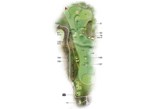 The par-4 10th hole on the Old Course at St Andrews, host of The Open.
The par-4 10th hole on the Old Course at St Andrews, host of The Open.
-
 The par-3 11th hole on the Old Course at St Andrews, host of The Open.
The par-3 11th hole on the Old Course at St Andrews, host of The Open.
-
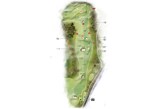 The par-4 12th hole on the Old Course at St Andrews, host of The Open.
The par-4 12th hole on the Old Course at St Andrews, host of The Open.
-
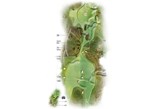 The par-4 13th hole on the Old Course at St Andrews, host of The Open.
The par-4 13th hole on the Old Course at St Andrews, host of The Open.
-
 The par-5 14th hole on the Old Course at St Andrews, host of The Open.
The par-5 14th hole on the Old Course at St Andrews, host of The Open.
-
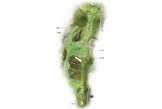 The par-4 15th hole on the Old Course at St Andrews, host of The Open.
The par-4 15th hole on the Old Course at St Andrews, host of The Open.
-
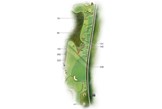 The par-4 16th hole on the Old Course at St Andrews, host of The Open.
The par-4 16th hole on the Old Course at St Andrews, host of The Open.
-
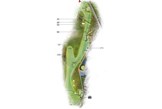 The par-4 17th hole on the Old Course at St Andrews, host of The Open.
The par-4 17th hole on the Old Course at St Andrews, host of The Open.
-
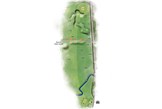 The par-4 18th hole on the Old Course at St Andrews, host of The Open.
The par-4 18th hole on the Old Course at St Andrews, host of The Open.
-
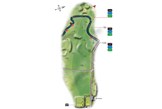 The par-4 1st hole on the Old Course at St Andrews, host of The Open.
The par-4 1st hole on the Old Course at St Andrews, host of The Open.
-
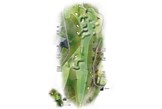 The par-4 2nd hole on the Old Course at St Andrews, host of The Open.
The par-4 2nd hole on the Old Course at St Andrews, host of The Open.
-
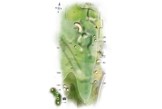 The par-4 3rd hole on the Old Course at St Andrews, host of The Open.
The par-4 3rd hole on the Old Course at St Andrews, host of The Open.
-
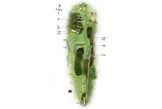 The par-4 4th hole on the Old Course at St Andrews, host of The Open.
The par-4 4th hole on the Old Course at St Andrews, host of The Open.
-
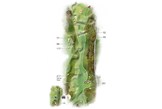 The par-5 5th hole on the Old Course at St Andrews, host of The Open.
The par-5 5th hole on the Old Course at St Andrews, host of The Open.
-
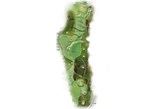 The par-4 6th hole on the Old Course at St Andrews, host of The Open.
The par-4 6th hole on the Old Course at St Andrews, host of The Open.
-
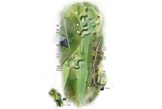 The par-4 7th hole on the Old Course at St Andrews, host of The Open.
The par-4 7th hole on the Old Course at St Andrews, host of The Open.
-
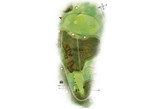 The par-3 8th hole on the Old Course at St Andrews, host of The Open.
The par-3 8th hole on the Old Course at St Andrews, host of The Open.
-
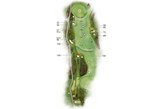 The par-4 9th hole on the Old Course at St Andrews, host of The Open.
The par-4 9th hole on the Old Course at St Andrews, host of The Open.
-
 Are distances going to make historic courses like the Old Course redundant?
Are distances going to make historic courses like the Old Course redundant?
-
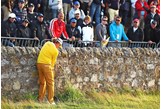 Miguel Angel Jiminez plays a shot off the wall on the Road Hole at St Andrews at the 2010 Open.
Miguel Angel Jiminez plays a shot off the wall on the Road Hole at St Andrews at the 2010 Open.
